LPWA or with longer name Low Power Wide Area is a type of telecommunication networks. It is being used for a long range communications at low bit rate among things-things, people-things. Actually we can call it as a group of telco networks, because it hugs plenty of technologies such as: LoRa, SigFox, LTE-M, NB-IoT and others.
Here we will talk about NB-IoT which is more relevant with its obvious advantages. NB-IoT is based on 3GPP standards and the standardization was already frozen on June, 2016.
NB-IoT (Narrowband Internet of Things), is to use for high connection density devices for sending and receiving small amount of data. If we want to go on main point to understand the aim of this technology then, see below image:
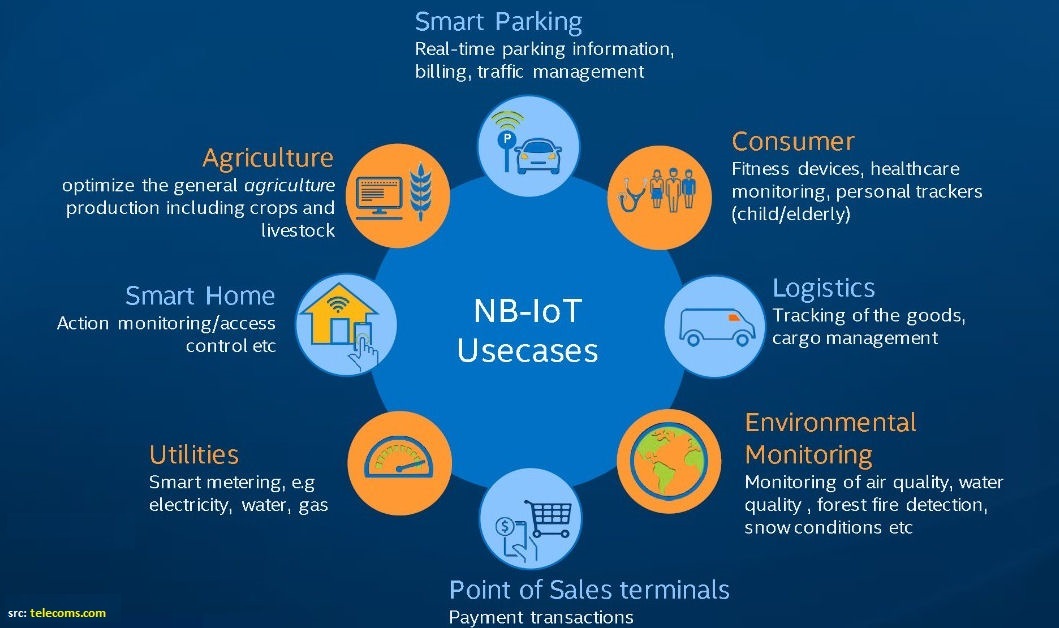
If you checked it out above image, then as a conclusion we can say that it will be an important part of our modern technology life.
Let’s give an example: the user will be able to know if there is an available parking place in the car lot before arriving it, an advance payment or own parking usage tracking could be possible. Just using the related mobile application on the phone which will be connected via radio interface to the NB-IoT base station.
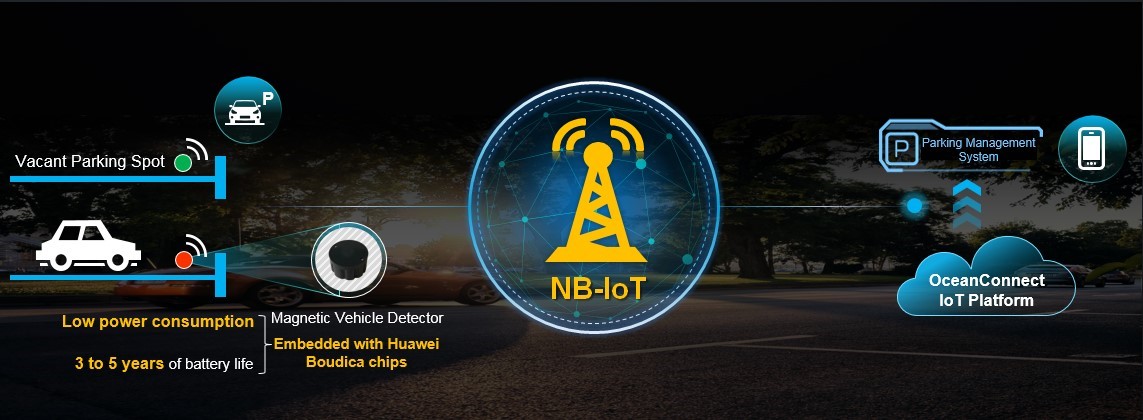 Image credit: Huawei
Image credit: Huawei
NB-IoT will mainly be used for indoor areas, where mobility is not required. Most of the NB-IoT devices will be powered with battery-backups, but with long life. Even years.
It would be better not to confuse NB-IoT with 5G IoT which is exist in forthcoming 5G generation. First one is based on LTE subset where downlink direction will use OFDMA and for uplink SC-FDMA schemes are being used. Contrary to NB-IoT, the 5G IoT hugs a very tremendous range for use cases.
Technical Characteristics
NB-IoT needs to use 200 KHz bandwidth, but here 200 KHz is not fully utilized: 10 KHz from each side is for guard band. According to the 3GPP specifications, it has three different deployment scenarios:
Standalone: 200 KHz bandwidth is independently utilized for NB-IoT outside LTE
Guard-Band: 200 KHz bandwidth is allocated in guard part of LTE
In-Band: 200 KHz bandwidth is occupied from LTE
NB-IoT deployment on low frequency bands has more efficiency due to deep indoor coverage; mostly suggested bands for the technology are 700MHz, 800MHz, and 900MHz
In standalone mode: there are several solutions for this case where existing used frequency bands can be re-farmed or completely not used bands can be arranged for NB-IoT if it is not occupied by other technologies. In any case guard band should be arranged to avoid any interference possibilities. The guard band length might be vary based on adjacent technology and frequency if it is GSM TCH, GSM BCCH, WCDMA or LTE.
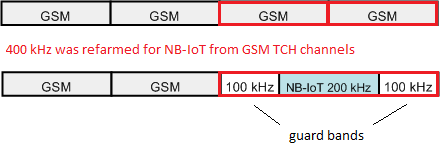

Guard-Band: for each band width of LTE has different guard band, it is clear from the following table. If there is no available option to deploy NB-IoT on stand-alone mode then we can use the mentioned technology on the guard bands of LTE, but there are some limitations for that.

Currently we are not able to utilize all guard bands even though 3GPP allows starting from 5 MHz . Technically recommended bandwidth is 500 KHz which starts from LTE 10 MHz where 1 MHz guard band is available (each side has 500 kHz).
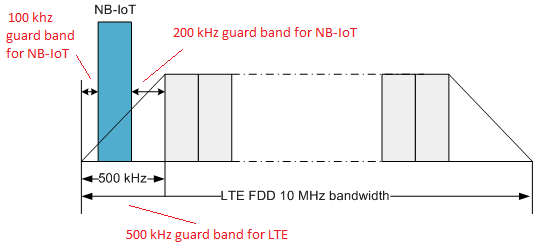
In-Band Mode: In most cases, this method is relevant for operators. In RAN side, they just need to allocate a PRB for NB-IoT technology within the current used LTE spectrum. There might be raised a question regarding the location of the PRB, where will it be allocated? Following table needs to be review for the answer:

On the following sample, NB-IoT PRB is allocated within LTE bandwidth. Just green one is used for NB-IoT, the rest of them are used for normal LTE technology.
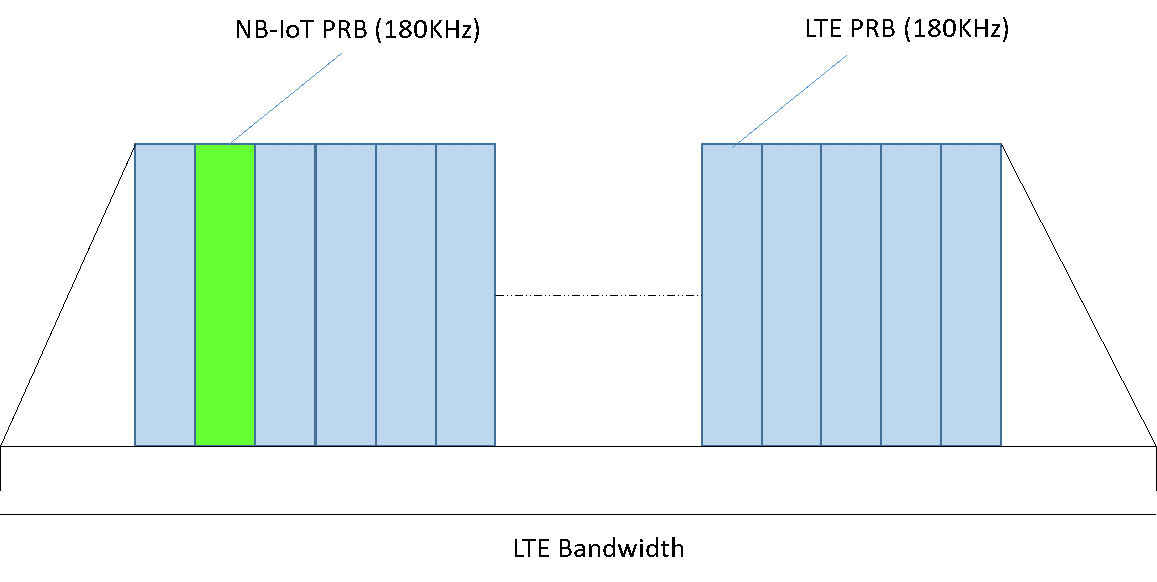
Following image shows NB-IoT network structure overview, in the example a smart water meter was installed at home. It periodically sends water consumption information to the related destination (3rd party application). On other side, the homeowner can check water usage information, statistics on the smart phone.
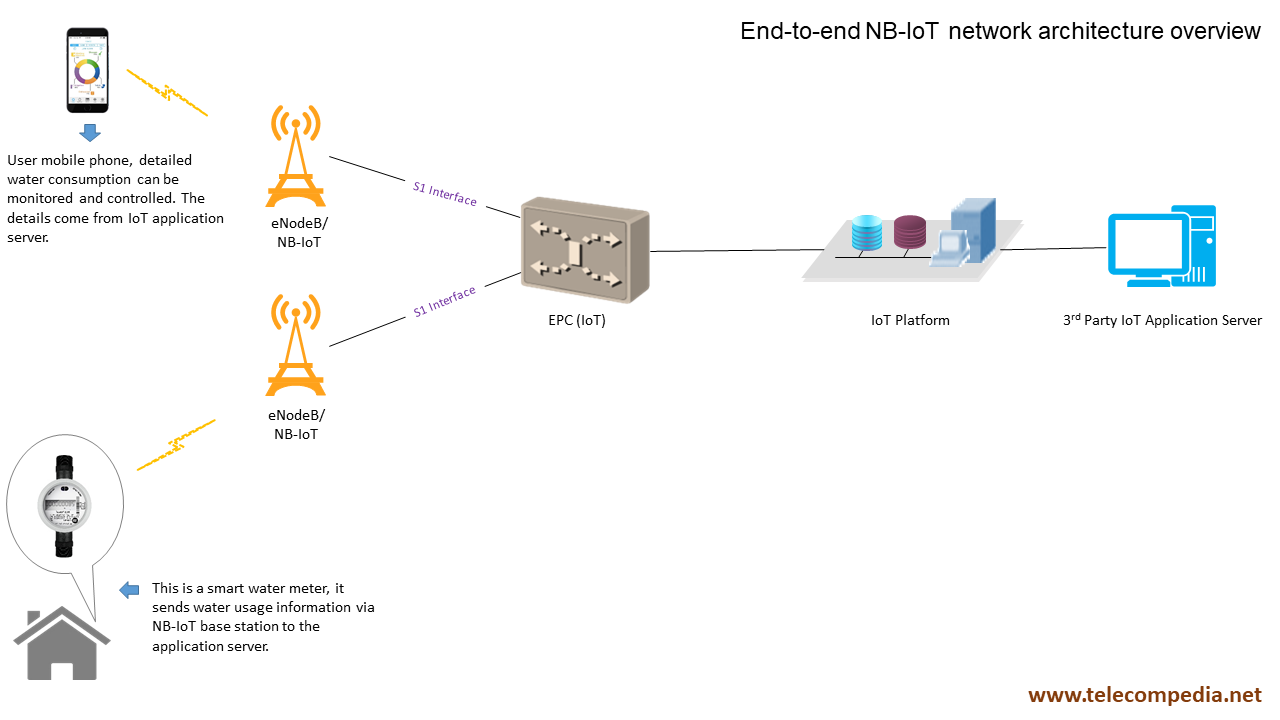
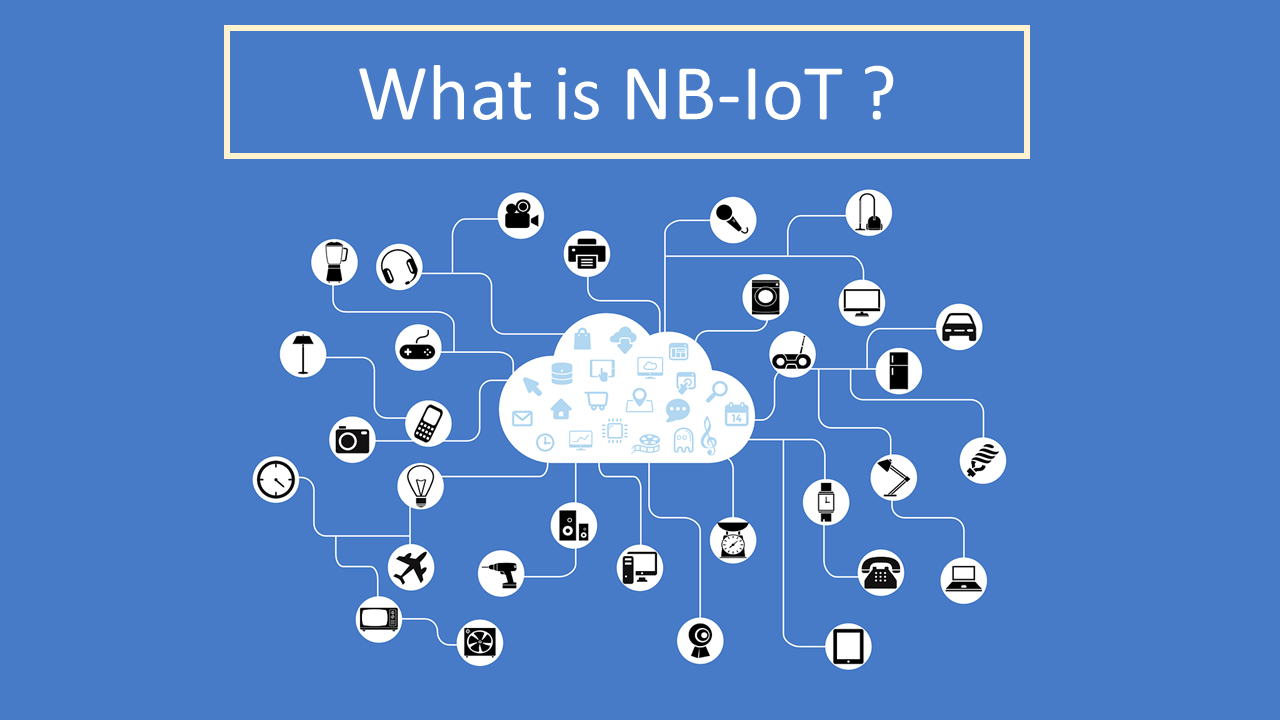
I love your posts.